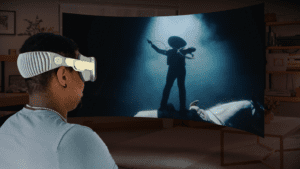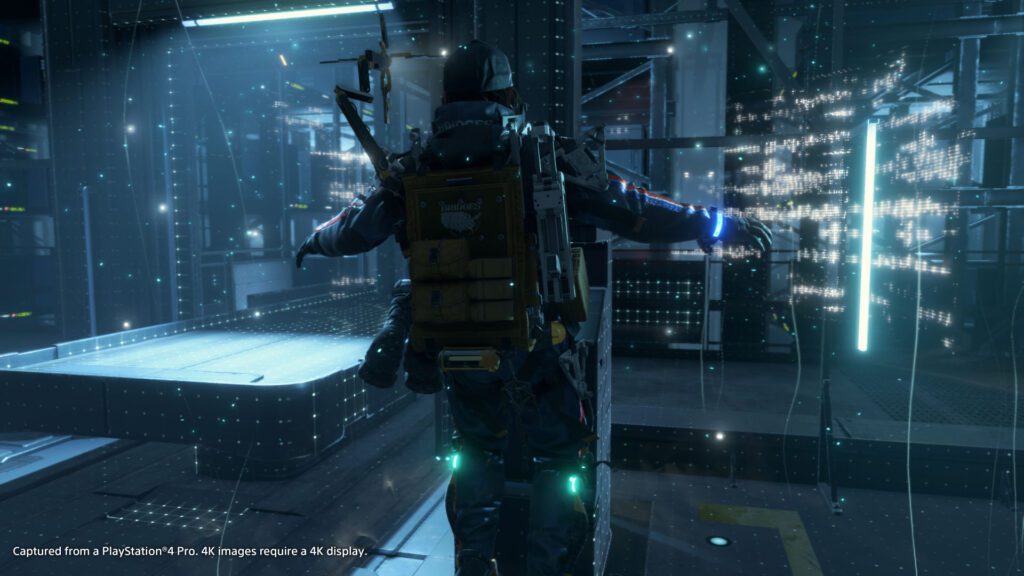 Virtual reality has quickly become one of the hottest trends in consumer marketing. Audi, Coca-Cola, Marriott and even IKEA have dipped their toes in the water and created immersive marketing experiences. But how does this new technology apply to the far more convoluted B2B marketing process?
Virtual reality has quickly become one of the hottest trends in consumer marketing. Audi, Coca-Cola, Marriott and even IKEA have dipped their toes in the water and created immersive marketing experiences. But how does this new technology apply to the far more convoluted B2B marketing process?
The key to B2B marketing is driving customers through the sales and marketing funnel. The most important stage is evaluation. The customer has already decided to make a purchase but must choose whether to buy your product or the competition.
It’s at this crucial moment where virtual reality can help your product stand out. With virtual reality, your customers can see your product up close and personal to see exactly why it’s superior. It’s like a trade show, a site visit, and a marketing presentation rolled into one.
Virtual reality is able to achieve this due to a concept called Presence. Presence is the idea that when you are wearing a virtual reality headset, the virtual environment you see around you seems real and you feel present within it. Because the environment is entirely virtual, it can be manipulated and changed to fit your marketing needs. Depending on the virtual reality simulation, Presence allows you to do anything, with anyone, anywhere you can imagine.
This gives marketing teams total control over the marketing experience. Want to show how your product can interact with a potential customer’s workflow? Put them right in the middle of a demonstration. Want to add visual cues highlighting key features? Add them at a push of a button. Want to wow a new client with a literal fireworks show? In virtual reality, it’s easy.
Unlike previous marketing tools like video or infographics, virtual reality can also have complicated interactive features. You can create an exact replica of your product in the virtual environment and then allow customers to get a feel for using it. This is try before you buy on a whole new level.
One of the things that separates business from consumer marketing is that it tends to involve much more high-touch interaction. Virtual reality excels at this. Not only can you put your customers in a virtual product simulation, you can also be there with them. Just like an online videogame, multiple users can be together in the same virtual space. But because the virtual reality headset is convincing you that the environment around you is real, it also convinces you that the other users are real as well. This is a concept called social presence and it’s the main reason why Facebook bought Oculus, the premier virtual reality company, for $2 billion two years ago.
Using social presence, you can talk with your customers in the virtual space and interact with them as if you were together in the same room. During product demos, you can bring in experts from your engineering team to answer questions. And you can even bring in your sales team to close the deal with a virtual handshake.
This is like a webinar on steroids. Rather than a disembodied voice speaking over a slide deck, you can walk your customers through a virtual reality presentation that feels just like an in-person seminar. You can bring in 3D visuals, change the environment, and actually have a real back-and-forth discussion about customer needs.
Of course, every marketer wants to know, is virtual reality actually an effective tool? What’s the ROI? So far, most indications are that virtual reality can dramatically increase customer engagement. Research out of Stanford’s Virtual Human Interaction Lab shows that virtual reality simulations can be powerful motivators for people’s buying behavior. Charities have already used virtual reality to drive a dramatic increase in donations.
But the best part about virtual reality, is that the effectiveness of a simulation can be measured in real time. Virtual reality analytics can determine what product a customer is most interested in, what parts of the presentation are most engaging, and which customer seems most likely to buy.
Virtual reality is still in its early days, but it is already an incredibly effective tool for marketing certain types of products. Large or complicated manufactured goods and equipment seem best suited to virtual reality marketing right now. Traditionally, sales of construction equipment, medical devices, or industrial robots require site visits and trade shows to demonstrate how a product works. With virtual reality, all of this can be accomplished by a $600 headset.
The best part about this new technology is that it is coming at a pivotal time for marketers. Marketers have found it increasingly difficult to stand out in an online environment saturated by content and shielded by AdBlockers. Virtual reality allows you to totally capture your customer’s attention to show them what makes your product exceptional. In a world of distractions, virtual reality lets you reclaim a captive audience.
But this is only the beginning for virtual reality as a marketing medium. With explosive growth in the number of virtual reality headsets over the next few years, marketers will need to move quickly to take advantage of this new technology. In every previous marketing technology revolution from television to social media, the companies that established themselves early earned massive outside gains. As virtual reality takes the marketing world by storm, the most savvy and cutting-edge marketers will have the advantage.
Matthias McCoy-Thompson is COO/co-founder of Agora VR.
Related Articles:
11 Inventive Ways to Use Augmented Reality
Using VR to Reach a New Market—The Elderly
Why B2B Marketers Need AR and VR Solutions
**This article was originally published in November 2017 and is updated frequently.



 Network
Network

